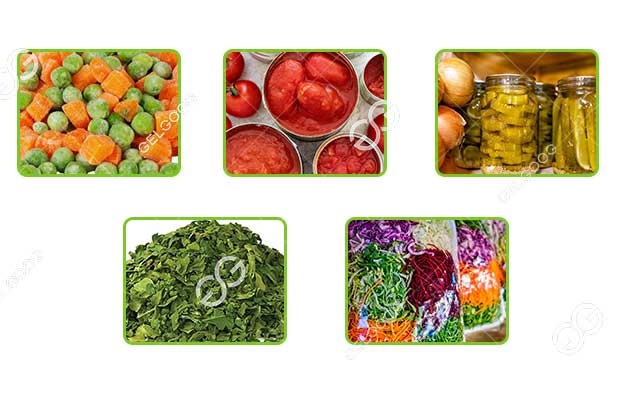Vegetables are an essential part of a balanced diet, providing us with essential nutrients and fiber that contribute to our overall well-being. While fresh vegetables are often the first choice for many, processed vegetables also have their place in our diets. Processing vegetables involves various methods that can extend their shelf life, enhance their flavors, and make them more convenient to prepare. In this article, we’ll explore five examples of processed vegetables that you might encounter on your journey from farm to table.
1. Frozen Peas and Carrots: The Convenience Kings
Frozen peas and carrots are among the most popular processed vegetables available. These vegetables are harvested at their peak ripeness, quickly blanched to preserve color and nutrients, and then frozen. The freezing process locks in the vitamins and minerals, making them a convenient and nutritious addition to a variety of dishes. From stir-fries to soups, these colorful veggies provide a burst of flavor and vibrancy, even when they’re out of season.
2. Canned Tomatoes: A Versatile Pantry Staple
Canned tomatoes are a versatile ingredient that can be used in a multitude of recipes. These tomatoes are often processed within hours of being harvested, ensuring that their natural flavors are captured at their best. The canning process involves sealing the tomatoes in an airtight container, preserving their taste and nutrients for an extended period. From making pasta sauces to hearty stews, canned tomatoes are a go-to option for adding depth and tanginess to your dishes.
3. Pickled Cucumbers (Pickles): A Flavorful Transformation
Pickling is a time-honored method of processing vegetables that involves soaking them in a solution of vinegar, water, and spices. This process not only imparts a unique tangy flavor but also increases their shelf life. Pickles can range from sweet to spicy and can be enjoyed as a snack, condiment, or garnish. Their distinctive taste and satisfying crunch make them a favorite accompaniment to sandwiches and burgers.

4. Dehydrated Spinach: Nutrient-Packed Green Powder
Dehydrated spinach is a fantastic example of how processing can change the form of a vegetable while preserving its nutritional value. By removing the moisture from spinach leaves, you’re left with a nutrient-dense powder that can be used in smoothies, soups, and sauces. This form of processing allows you to incorporate leafy greens into your diet even when fresh options aren’t readily available.
5. Pre-cut Salad Mix: Freshness and Convenience Combined
In today’s fast-paced world, pre-cut salad mixes have become a popular choice for those seeking a quick and healthy meal option. These mixes often include a variety of lettuces, greens, and sometimes other vegetables, all washed, chopped, and ready to eat. While the convenience factor is high, it’s important to keep in mind that these mixes may have a shorter shelf life due to their pre-cut nature.
In conclusion, processed vegetables come in various forms and offer both convenience and versatility. While fresh vegetables should remain a staple in your diet, these processed options can serve as valuable additions that make meal preparation easier without sacrificing nutritional value. From the freezer to the pantry, these processed vegetable products showcase the ingenuity of food processing techniques that bring the farm’s bounty to your table year-round.
The above concentrated 5 examples of processed vegetables are more welcome and more promising. If you want to start related business, you can contact us at any time. We are specialized in providing vegetable processing line solutions, including fresh vegetable processing, fruit juice and jam processing, frozen vegetable processing, vegetable drying processing, etc. Please contact us quickly.
